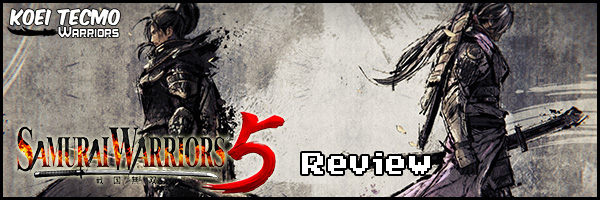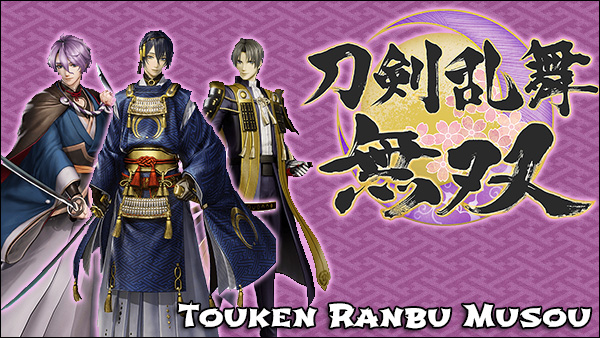
Critic: Shaun Player
Date of Review: 22 Aug 2021
Version: Nintendo Switch
File Size(s): 14.2GB(PS4/XB1), 9.2GB(NS), 25GB(PC)
Region: PAL
Game Page: Samurai Warriors 5 Game Page
Review copy provided by KOEI Tecmo Games Europe.

We may have been waiting since 2014 for the next mainline instalment to Samurai Warriors, but finally after 7 years the titular 5th title is now out on the market for all to enjoy. But after such a long wait, has the built up anticipation been worth it? Omega Force had decided to go a new route with Samurai Warriors 5 by scrapping it’s previous games efforts and doing a soft reboot. This new iteration of Samurai Warriors focuses solely on Nobunaga Oda and his relationship with Mitsuhide Akechi. You get to view the story from both perspectives as you reach Nobunaga’s eventual demise at Honnoji.
So what exactly makes this game a reboot? The first thing you will notice is the overhaul in character design and graphical style. Instead of it’s usual anime focused style, it now has a much more Manga artistic style instead. Majority of the characters have gotten complete redesigns in both looks and personality, most for the better, while some being outright bizarre.
With the new looks also come a complete new set of movesets for our warriors to harness. Though this could be seen as quite controversial among Warriors game fans, they have taken the system from Dynasty Warriors 7 onwards and enabled characters to swap weapons freely. To avoid everyone being a complete clone of themselves however every main character has their own preferred weapon of the lot, which will enable them to perform unique attacks with the weapon. For example Nobunaga Oda’s preferred weapon is the Odachi, so there will be further charge combo strings that only he can perform with that weapon type equipped.

Samurai Warriors 5 offers the usual Musou Mode story, and along with this a side mode called Citadel Mode. I’ll get more into that later, as really the meat and bones to this game is the Musou mode. You start off with following the perspective of Nobunaga Oda, starting out with his first initial skirmishes with Yoshimoto Imagawa back in the 1540’s. As you progress through the first handful of chapters you will then unlock Mitsuhide Akechi’s perspective, a separate storyline to follow through his eyes. Both stories have unique scenarios and fun battles, though unfortunately there is still a lot of crossover that play rather identical (besides a few swapped in battle missions) which ever side of the storyline path you chose.
That isn’t to say that Mitsuhide’s story path isn’t worth plunging into, just be warry that some chapters of his have recurring battles you played with Nobunaga’s perspective. Outside of Nobunaga and Mitsuhide as the leading men, you also have 25 other main characters to enjoy. This includes newcomers such as Mitsuki (an original character by Omega Force), Sena (wife of Ieyasu Tokugawa), Shikanosuke Yamanaka (a die hard Amago loyalist who idealises Mitsuhide) and quite a few more. Not all of them have unique weapons, but they do have unique moves assigned with their preferred weapon equipped. Out of the weapon selection there are quite a few new types, such as wielding a hand cannon, using talisman magic, beating people up with fist claws and more.
The battles themselves play out quite similarly to what you would expect from playing previous games, though the battlefields tend to be much larger and open instead of the many narrow corridor style. You blend together both normal attacks (Y, Square, X) with your charge attacks (X, Triangle, Y) to deal devastating attacks. Movesets generally have a far wider range to their attacks now, so you can wipe the floor with hundreds in one fell swoop. The hyper attack system returns here also, but it plays out quite a bit different to Samurai Warriors 4’s inclusion. You cannot perform combos with it, nor can you mop enemies or scoot around the battlefield using it. It is more so used as a means to quickly catch up to more groups of enemies, sneak an attack in from behind on an enemy officer, and generally to keep your HIT count high.
HIT count is just as vital as KO count on the battlefield. You’ll be strategizing what is the best way to get both a high KO count and a HIT count by continuously chopping at your foes, using the Hyper attacks to deal big hits at low damage. What also helps is you can switch between two characters in majority of the battles (all in Free mode), and it keeps your HIT count rocking when you swap. This, along with KOs, speed of completion and officer kills are what the game ranks your completion on.

Now with the story mode covered, that leaves you with Citadel mode to dig into. Citadel Mode is a mix of mission based objectives and your home base to use shops, blacksmiths and the like. As you progress through the main story, you can unlock upgrades which require materials to improve each building in your Citadel. Materials can only be acquired through grinding the Citadel mode missions, which unfortunately is an overly massive grind. Every mission revolves around you having to defend 1-3 entrances to a fort from an always predictable amount of enemies and officers trying to break in. Each mission will then reward you certain materials you can use to upgrade your Citadel buildings.
You do get to equip three squadrons of troops with you to help with this. Allowing you to summon 3-5 (depending on their level) spearmen, cavalry, kunoichi, and many other unit types to the field to help guard your posts. They are quite hit and miss if they actually help you when you have to wonder off hunting down enemies elsewhere, but most cases they do stall officers long enough for you to get back. There are a few other things you can do in Citadel mode, such as building up friendship ranks with certain officers to unlock a very brief dialog scene with, but most are not especially that entertaining and likely not worth pushing the grind for them alone.
In short, this mode is very repetitive, and locks too much important components behind it’s needless grind. It is a shame as the whole summon troop squads and fort style defense battles has potential to work out great. Just not how it is executed here.

That is pretty much the core gameplay, with 15 weapon move sets to play with, 27 main characters (and 10 additional support characters) to play around with, there is a fair amount you can enjoy from the Musou mode and replaying battles in free mode. However it may feel quite troubling to commit as now you are playing as a weapon more so than your favourite character with their more unique flair. It really comes down to how you look at it when playing and if the unique spins for the preferred weapons change things up enough for you (some do, some are more mediocre).
On the Switch the game runs remarkably well, with very little slow down that hits on the rare case a lot of excitement, slashing and particles are flying all about the place, but it only dips slightly and soon gets back up to it’s more stable 30FPS. The game also suffers with needlessly long loading times that just seem like the game hasn’t been quite optimised enough in the oven. You can be waiting up to two minutes in some cases just for a short dialog scene. Naturally the loading times are not an issue when playing on PS5 or Xbox Series S/X.
Overall do we recommend the game? If you want a fairly in-depth look at Nobunaga’s life, with a slice of Mitsuhide’s take on the side, you’ll get quite a lot of enjoyment out of this title. Most of the newcomers are quite charming and fun to see in their own right, and the story mode offers a lot of battles to dig your teeth into (along with a lot never before seen in Samurai Warriors games). However if you are looking for more of a general Samurai Warriors title that focuses on the many clans throughout the Warring States period, this is not for you. The heavy focus on Nobunaga and very few occasional battles catering to side characters won’t scratch that itch. Either way, just don’t question why Ieyasu Tokugawa is stuck as a 10 year old throughout the 40 odd year story period.










